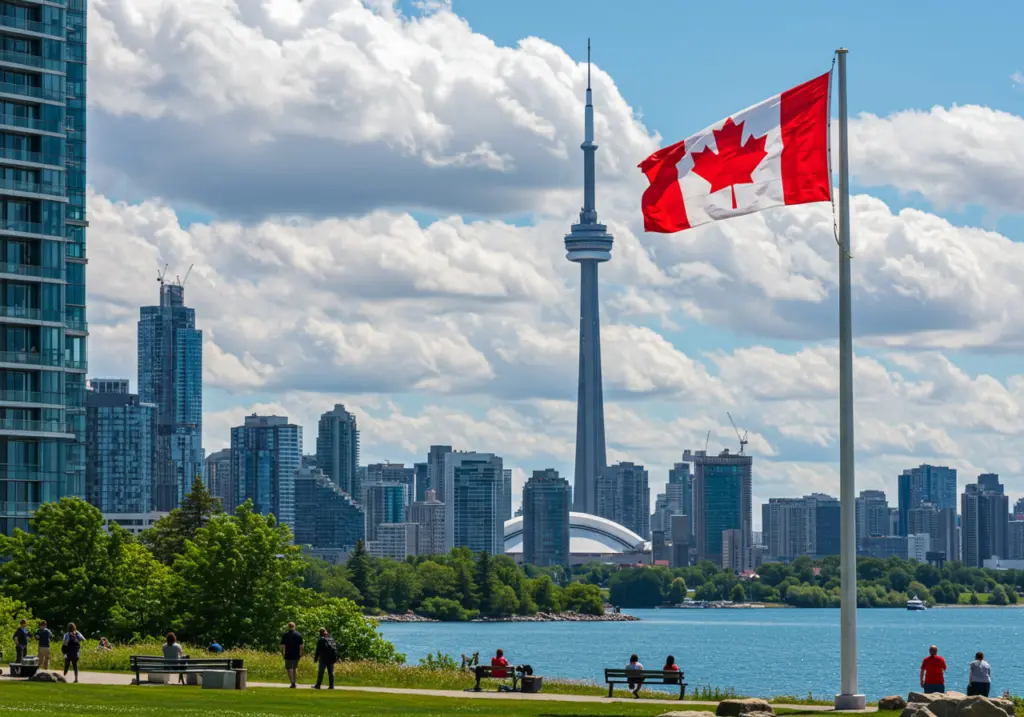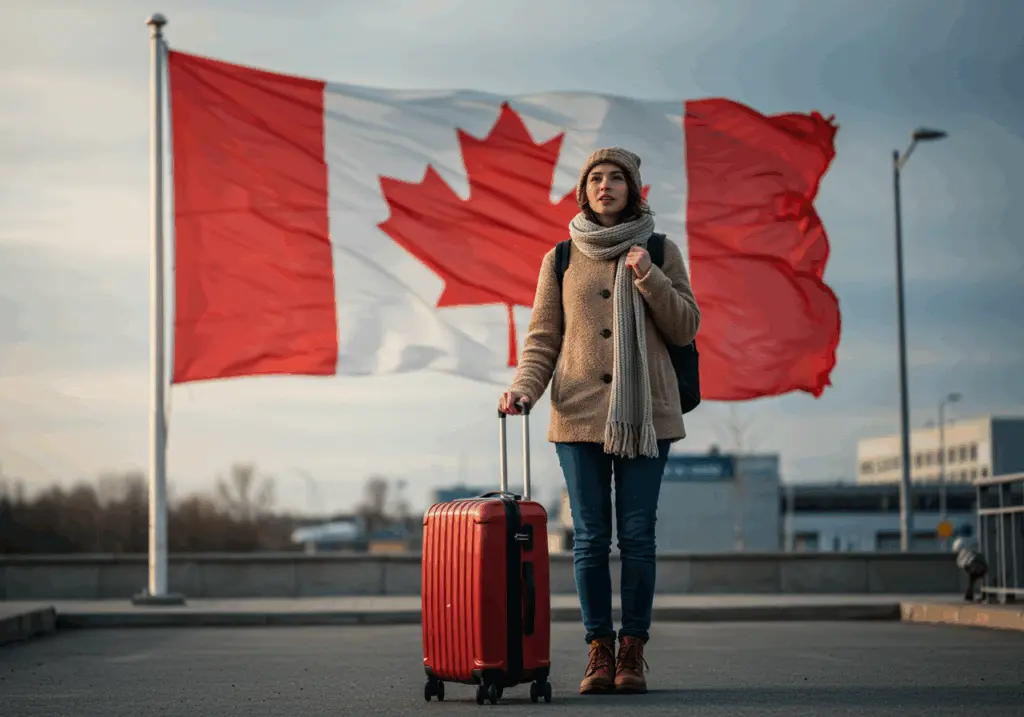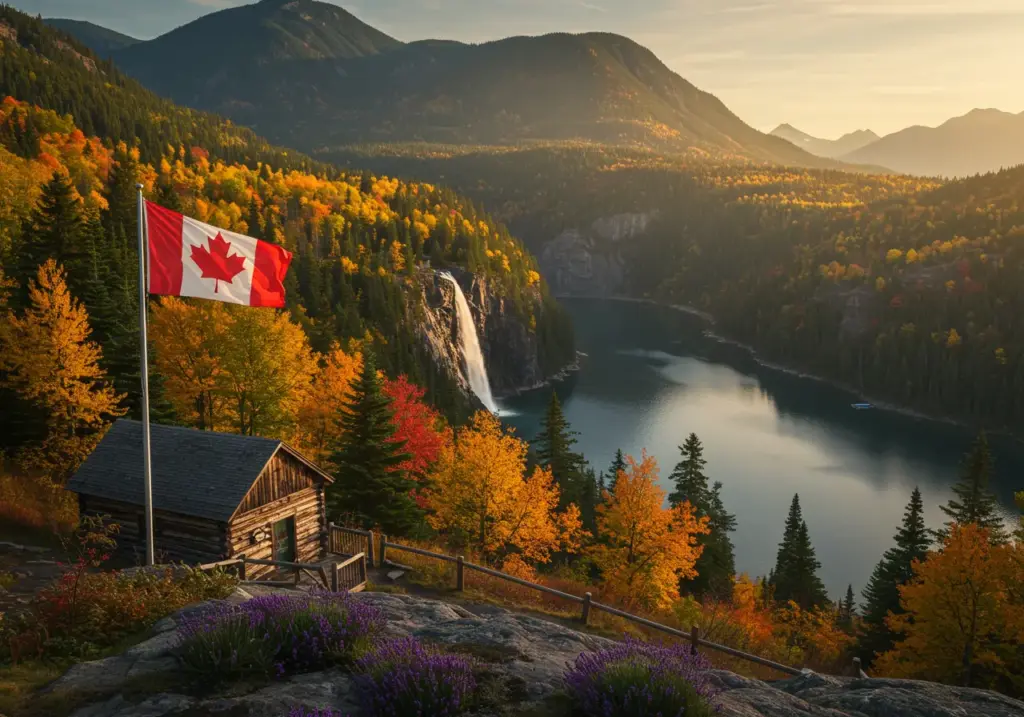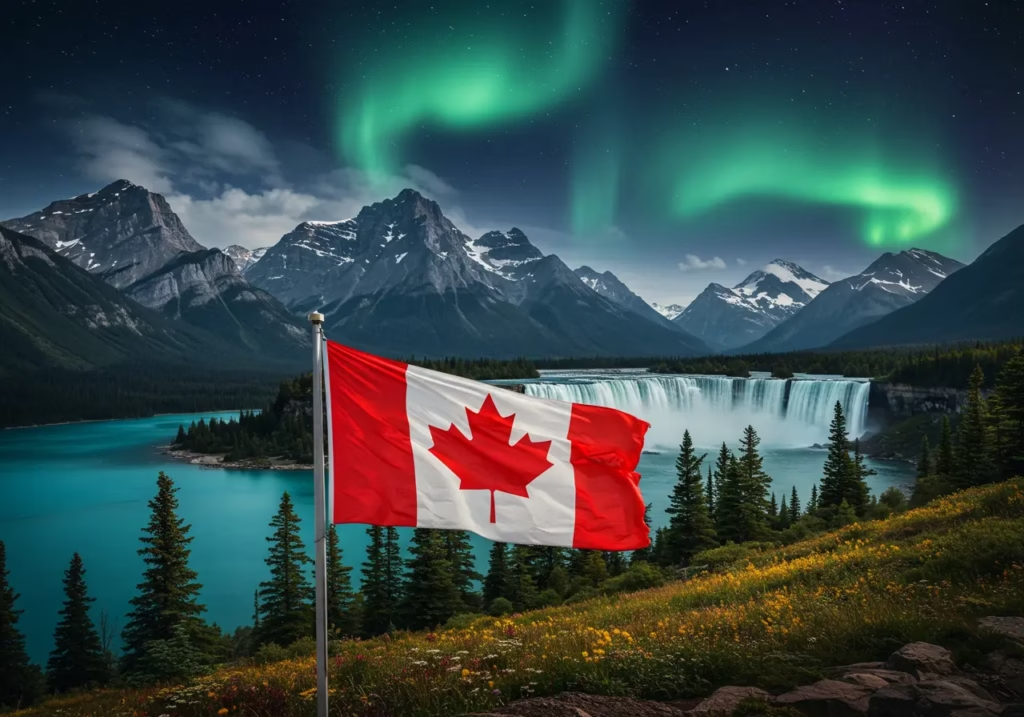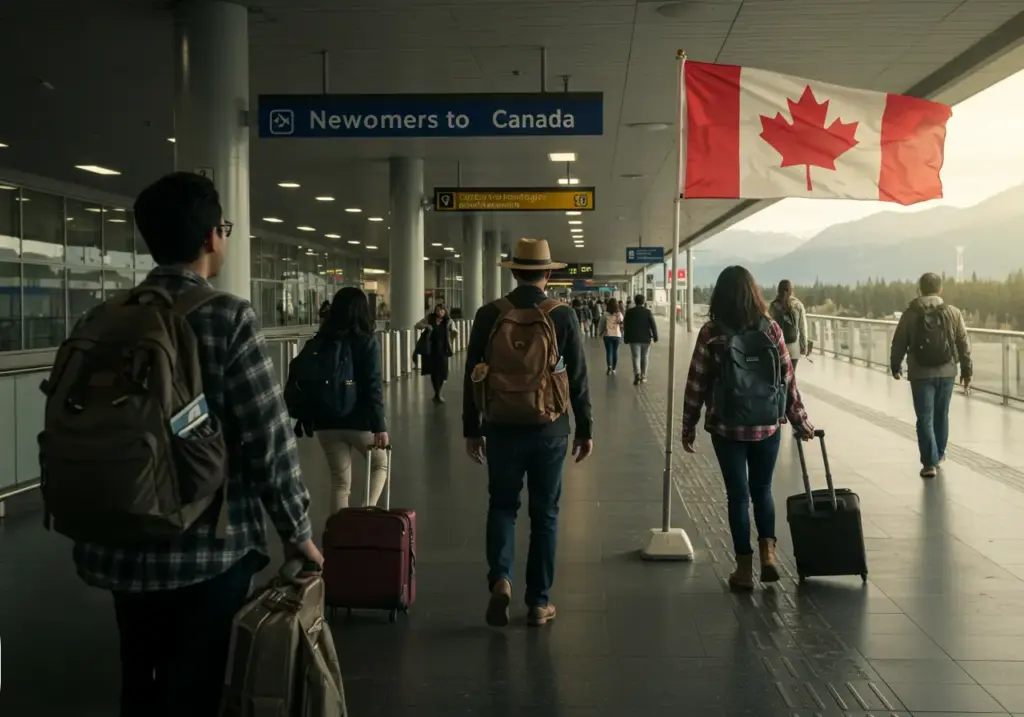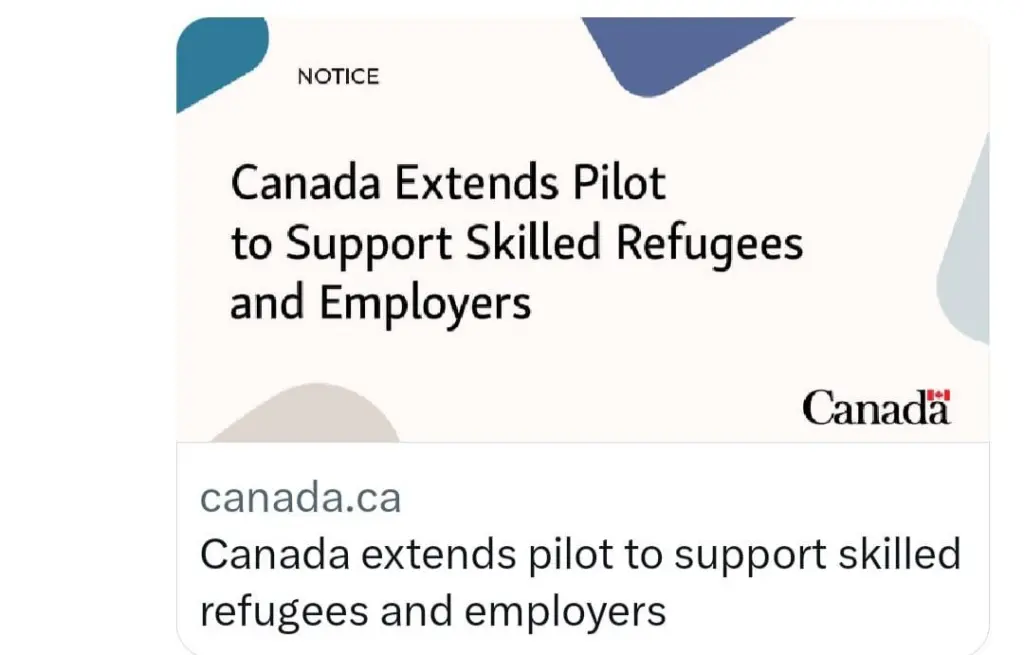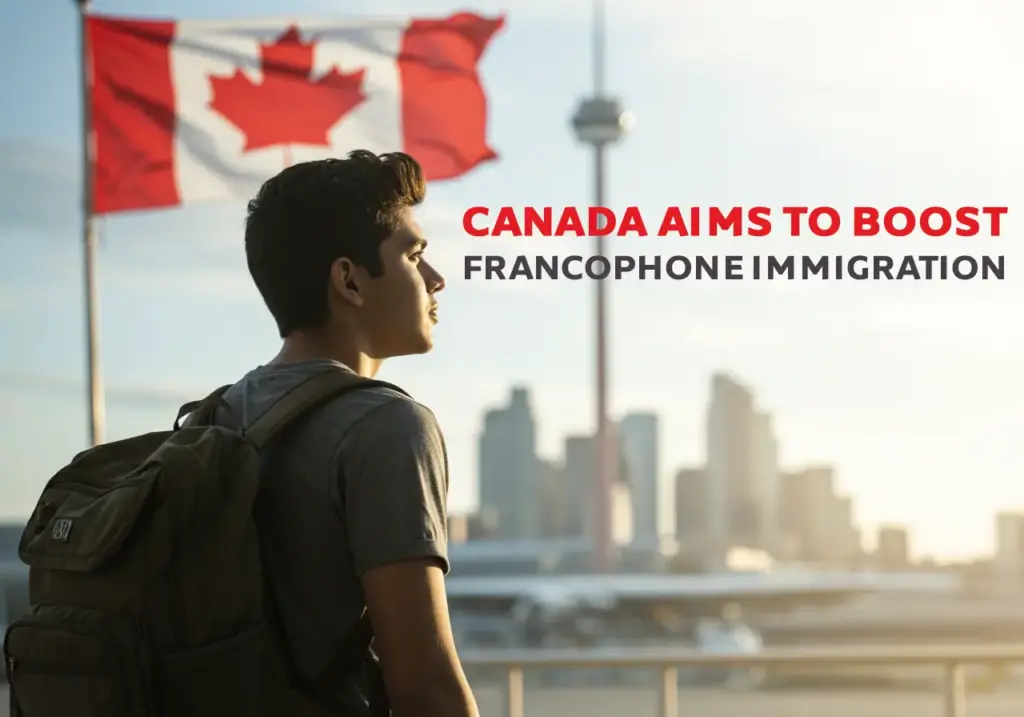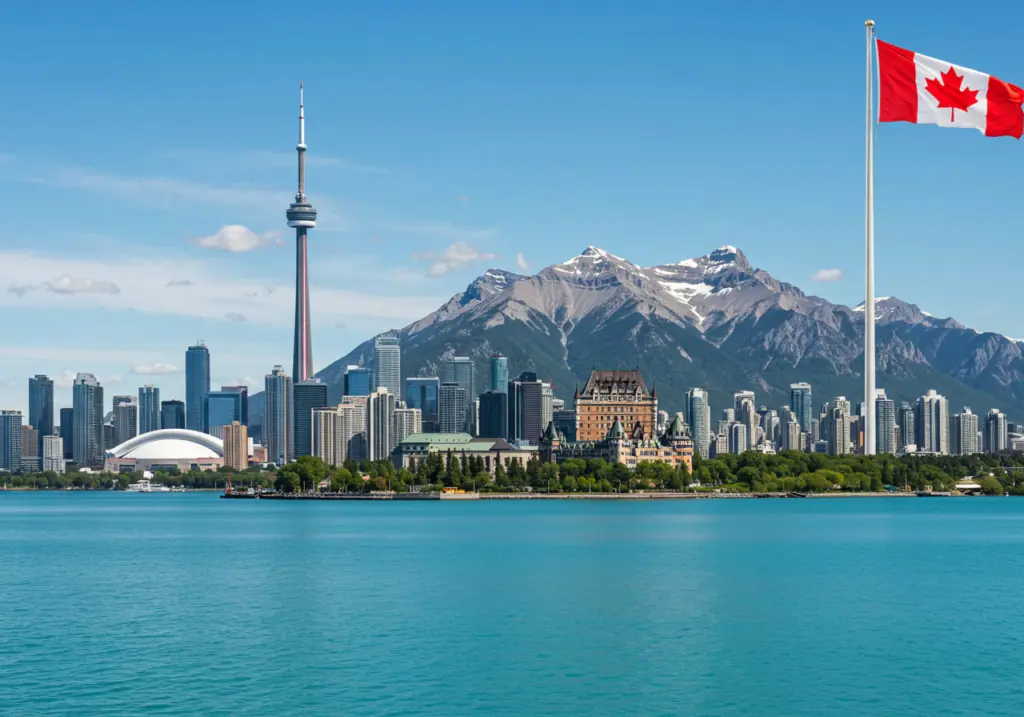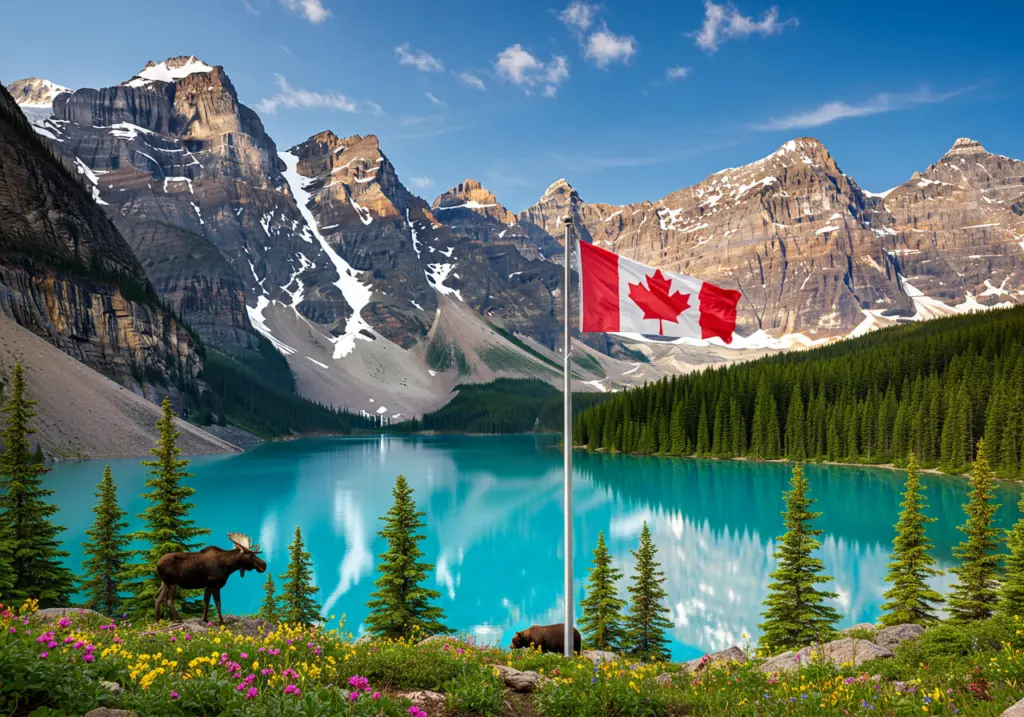Prepare and Adapting for Canada’s Diverse Weather Conditions – A Newcomer’s Guide

Canada is famous for its beautiful landscapes and diverse cities. However, its weather can be very different from what many newcomers expect. In this guide, we focus on adapting to Canadian weather. From cold winters to warm summers, you will learn simple tips on how to prepare for each season. In addition, this guide compares Toronto and Vancouver weather. By reading further, you will find practical advice and easy strategies to survive Canada’s climate.
Find out if you are eligible to get in Canada →
Understanding Canada’s Seasons and Adapting to Canadian Weather
Canada’s climate is as vast and varied as its landscape, with four distinct seasons that each bring unique challenges. From snowy winters to humid summers, understanding the seasonal changes is key to adapting to Canadian weather successfully. Winter can be harsh and long, especially in cities like Montreal or Edmonton, while summer brings intense heat in places like Toronto. Spring and fall often bring unpredictable shifts, requiring flexible clothing choices. To stay comfortable and safe year-round, it’s essential to plan ahead and prepare for each season’s demands. Mastering this cycle is the first step to thriving in Canada’s climate.
Winter (December – March)
What to Expect:
- Very cold temperatures, sometimes below -30°C in cities like Winnipeg and Montreal.
- Heavy snow, icy sidewalks, and strong winds make travel difficult.
- In contrast, Vancouver has milder winters with a lot of rain.
How to Prepare:
- Wear thermal layers and an insulated coat.
- Use waterproof boots, gloves, scarves, and a warm hat.
- For extra safety, spread salt or sand on walkways.
Spring (March – May)
What to Expect:
- Gradual warming, but cold spells may still occur.
- Rain increases as snow melts, which can make the ground muddy.
How to Prepare:
- Use waterproof boots and a sturdy rain jacket.
- Dress in layers to adjust to changing temperatures.
- Moreover, keep an eye on the weather forecast.
Find out if you are eligible to get in Canada →
Summer (June – August)
What to Expect:
- In cities like Toronto and Montreal, temperatures can go over 30°C with high humidity.
- In other regions, such as British Columbia, the heat is dry and less intense.
How to Prepare:
- Wear light, breathable clothes and apply sunscreen.
- Stay hydrated and avoid being outside during the hottest parts of the day.
Additionally, check local air quality alerts, especially if wildfires occur.
Fall (September – November)
What to Expect:
- Fall brings cool air and bright autumn colors.
- However, temperatures may drop suddenly.
How to Prepare:
- Use layers so you can easily adapt as the temperature changes.
- Keep a waterproof jacket handy for unexpected rain.
Toronto vs. Vancouver: Weather Comparison and Dressing Tips
When it comes to adapting to Canadian weather, the location matters. Two popular cities for newcomers are Toronto and Vancouver. Their climates are very different.
| Feature | Toronto (Ontario) | Vancouver (British Columbia) |
| Winter | Cold, snowy, as low as -20°C | Milder, rainy, rarely below 0°C |
| Summer | Hot, humid, 30°C+ | Warm, less humid, ~25°C |
| Rainfall | Moderate, occasional storms | Heavy, persistent rain |
| Weather Challenges | Snowstorms, ice buildup, humid summers | Constant rain, risk of flooding |
If you’re moving to Toronto, you’ll need a strong winter wardrobe. In Vancouver, waterproof clothing is more essential than heavy winter gear.
For insights on how climate and geography influence life in Canada for immigrants, read How do climate and geography influence life in Canada for immigrants?
Dressing Tips for Canadian Weather
- Toronto:
In winter, you need a strong insulated coat and warm layers. Also, wear waterproof boots and accessories like gloves and hats. - Vancouver:
Since it rains a lot, choose a good rain jacket and waterproof shoes rather than heavy winter gear.
Moreover, in spring and fall, always dress in layers. This way, you can quickly adapt to changing weather. For summer, use light fabrics, wear sunglasses, and drink plenty of water.
Find out if you are eligible to get in Canada →
For more ideas on how to live well in Canada, visit How is Life in Canada for Foreigners?
Extreme Strategies for Adapting to Canadian Weather
Winter Survival Tips
- Avoid frostbite: Cover exposed skin and stay indoors during extreme cold warnings.
- Drive safely: Use winter tires and drive cautiously on icy roads.
- Prepare for power outages: Keep extra blankets, food, and emergency supplies at home.
Dealing with Heavy Rain (Vancouver & Coastal Areas)
- Invest in waterproof gear: A high-quality raincoat and waterproof boots are essential.
- Use public transport more: Driving in heavy rain can be hazardous.
- Be flood-aware: If you live in low-lying areas, monitor weather alerts.
Surviving Heatwaves (Ontario & Prairie Provinces)
- Stay indoors during peak hours: Avoid direct sun exposure between 12 PM – 4 PM.
- Use air conditioning or fans: If A/C isn’t available, visit malls or public spaces.
- Monitor air quality: During wildfire season, check air pollution levels.
A Newcomer’s Story: Raj’s First Winter in Canada
Raj moved from India to Toronto and was excited to see snow for the first time. But by January, he realized he wasn’t prepared—his regular jacket wasn’t warm enough, and he slipped on ice several times.
After getting proper winter boots, thermal layers, and gloves, he adjusted. By his second winter, he even started enjoying outdoor activities like ice skating and winter hiking.
His advice to newcomers?
“Winter seems intimidating at first, but with the right clothing and preparation, you’ll adapt quickly!”
Find out if you are eligible to get in Canada →
Final Tips for Adapting to Canadian Weather
- Check daily weather forecasts – Conditions can change rapidly.
- Invest in quality winter gear – It’s worth the cost for comfort and safety.
- Join local communities – Newcomer groups can offer valuable advice on adapting.
- Embrace the seasons – Each one has unique activities, from skiing in winter to hiking in summer.
By understanding Canada’s diverse weather and preparing accordingly, you’ll make your transition smoother and more enjoyable.
Useful Resources for Newcomers
- Government of Canada Weather Guide – Up-to-date forecasts and safety alerts.
- Best Winter Clothing Brands in Canada – High-quality gear for extreme weather.


